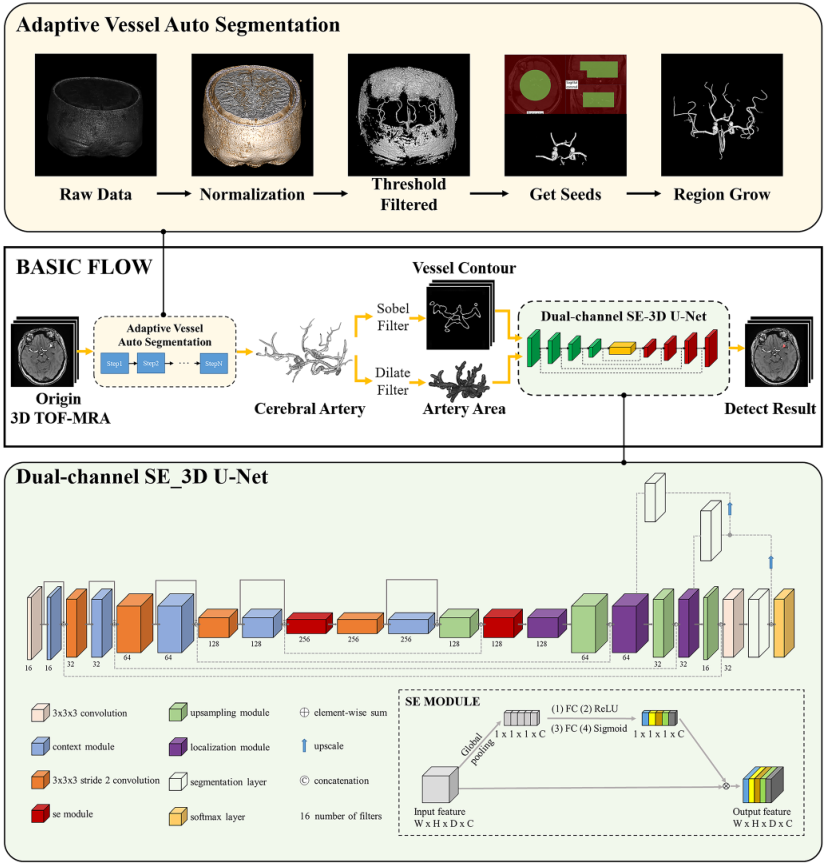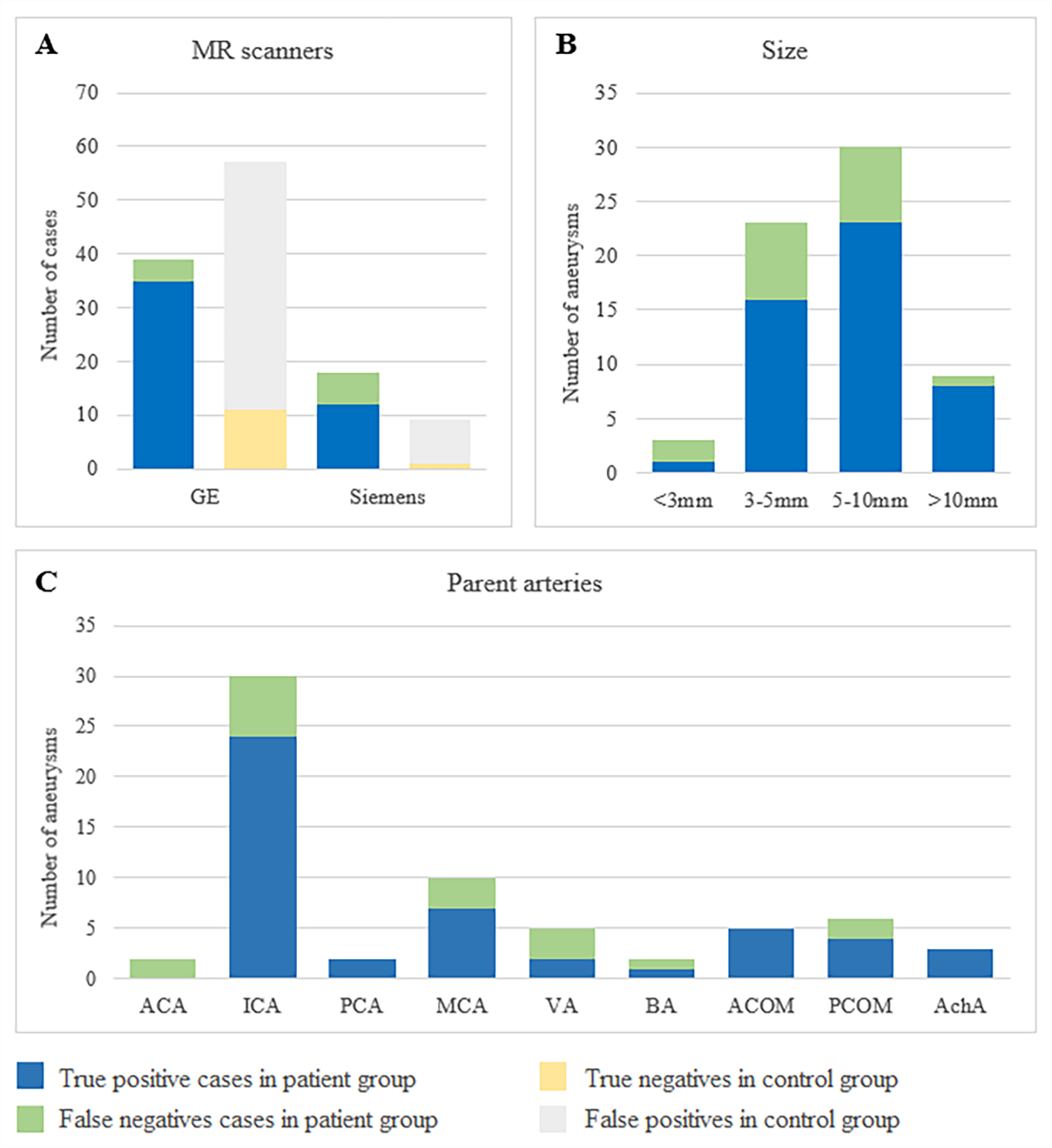Cerebral aneurysms are high-incidence, high-risk and insidious onset. Timely detection and intervention can help prevent aneurysm rupture. Researchers at Suzhou Institute of Biomedical Engineering Technology (SIBET) of the Chinese Academy of Sciences have recently proposed an equalized augmentation strategy based on aneurysm location and constructed a detection model based on dual channel SE-3D UNet.
The research was carried out by GENG Chen, an associate researcher in DAI Yakang's group at SIBET, in collaboration with the Department of Radiology at Huashan Hospital, Fudan University.
Time of flight magnetic resonance angiography (TOF-MRA) is the primary non-invasive screening method for intracranial aneurysms. However, manual screening can result in missed diagnoses and low efficiency. Existing deep learning-based automated detection algorithms have a high average number of false positives per case. This can lead to risk and unnecessary digital subtraction angiography (DSA) examinations, making it difficult to apply these methods in clinical practice.
To enhance detection performance, GENG and his team utilized an equalized augmentation strategy based on the location of the aneurysm lesion, which aimed to mitigate the issue of biased detection results arising from data imbalance in the neural network model.
The proposed detection method involves preprocessing the entire TOF-MRA data using an adaptive thresholding intracranial vessel extraction algorithm. The resulting images, which depict the contour and entirety of the vascular tree, are then utilized as inputs for the dual-channel SE-3D UNet model.
This model incorporates a channel attention mechanism for adaptive feature selection, allowing for automatic processing of raw TOF-MRA images to detect aneurysms and generate output that includes annotations of their locations. The overall process of the dual-channel SE-3D UNet is shown in Figure 1.

Figure 1. Flow chart of the proposed detection method. (Image by SIBET)
The method was validated on a multicentre dataset. Experimental results indicated that the sensitivity of detection at case level (TRP) was 82.46% and the average number of false positives per case (FPs/case) was 0.88.
"This method demonstrates that an aneurysm detection algorithm with both high sensitivity and low false positive rate is possible," said GENG.
The performance of the method on each dimensional grouping is shown in Figure 2, there was no significant difference between the detection performance of each grouping after statistical analysis.
“The proposed method showed significant improvement in performance compared to existing similar methods, with a competitive sensitivity and a lower mean number of false positives per case,” said GENG.
Results of the study entitled "Automated unruptured cerebral aneurysms detection in TOF MR angiography images using dual-channel SE-3D UNet: a multi-center research" was published in European Radiology. The work was supported in part by National Natural Science Foundation of China, Science and Technology Commission of Shanghai Municipality, and Shandong Natural Science Foundation under Grant.

Figure 2. The performance of the proposed method on the various dimensions of the external test set grouping. (Image by SIBET)
Contact
XIAO Xintong
Suzhou Institute of Biomedical Engineering and Technology, Chinese Academy of Sciences (http://www.sibet.cas.cn/)
Phone: 86-512-69588013
E-mail: xiaoxt@sibet.ac.cn